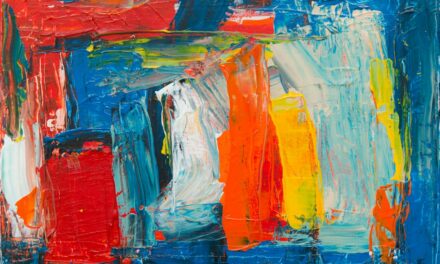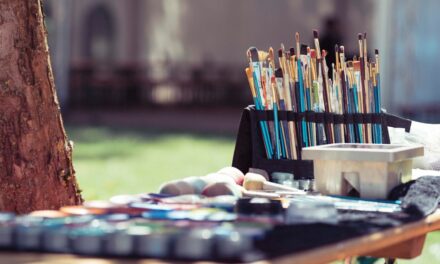In the realm of visual arts, the debate surrounding the use of photo reference and life drawing has long been a topic of discussion among artists, educators, and enthusiasts alike. Both methods serve as invaluable tools for understanding form, light, and composition, yet they offer distinct advantages and challenges. Photo reference allows artists to capture fleeting moments and intricate details that may be difficult to replicate from memory alone.
Conversely, life drawing fosters a deeper connection with the subject, encouraging artists to engage with the physicality of their models and the nuances of human anatomy. Understanding the importance of both approaches is essential for any artist seeking to refine their skills and expand their creative repertoire. The significance of photo reference lies in its ability to provide a wealth of visual information that can be revisited at any time.
Photographs can encapsulate a moment in time, preserving the subtleties of light, shadow, and colour that might otherwise be lost in the act of drawing from life.
On the other hand, life drawing cultivates an artist’s observational skills, pushing them to interpret the world around them in real-time.
The tactile experience of drawing from a live model enhances an artist’s understanding of proportion, gesture, and movement, ultimately enriching their artistic practice.
Summary
- Photo reference and life drawing are important for understanding the human form and capturing realistic proportions in art.
- Using photo reference in art allows artists to study details and lighting that may be difficult to capture from memory or imagination alone.
- Life drawing in art helps artists develop a deeper understanding of anatomy, gesture, and movement through direct observation of the human figure.
- Finding the balance between photo reference and life drawing is essential for honing both technical skills and creative expression in art.
- Incorporating photo reference into your art practice can be done by using it as a starting point for composition and then adding personal touches and details.
The Benefits of Using Photo Reference in Art
Capturing Intricate Details
One of the most notable advantages is the ability to capture intricate details that may be challenging to observe in real life. Photographs can freeze a moment, allowing artists to study textures, patterns, and colours with precision.
Flexibility and Inspiration
This level of detail can be particularly advantageous for artists working on complex subjects such as landscapes or still lifes, where capturing minute elements can elevate the overall composition. Furthermore, photo reference provides a vast array of subjects that may not be easily accessible for life drawing sessions, such as exotic animals or historical architecture. Another key benefit of using photo reference is the flexibility it affords artists in their creative process.
Broadening Horizons
With a photograph at hand, artists can work at their own pace, revisiting specific details as needed without the pressure of time constraints often present in life drawing sessions. This allows for a more contemplative approach to art-making, where artists can experiment with different techniques and styles without the immediacy of a live model. Additionally, photo reference can serve as a source of inspiration, sparking new ideas and concepts that may not have emerged through traditional life drawing alone. By incorporating photographs into their practice, artists can broaden their horizons and explore new avenues of creativity.
The Benefits of Life Drawing in Art
Life drawing holds a unique place in the artistic journey, offering benefits that extend beyond mere technical skill development. One of the primary advantages of drawing from life is the opportunity to engage with the subject on a personal level. This interaction fosters a deeper understanding of human anatomy and movement, allowing artists to capture the essence of their subjects with greater authenticity.
The immediacy of life drawing encourages artists to respond instinctively to their models, honing their ability to convey emotion and narrative through gesture and expression. Moreover, life drawing cultivates an artist’s observational skills in ways that photo reference cannot replicate. When drawing from life, artists must rely on their senses to interpret the three-dimensional form before them.
This process sharpens their ability to perceive subtle variations in light and shadow, as well as the interplay between different elements within a composition. The act of translating what one sees onto paper or canvas requires intense focus and concentration, ultimately leading to a more profound understanding of visual language. As artists develop these skills through life drawing, they become more adept at translating their observations into compelling works of art.
Finding the Balance Between Photo Reference and Life Drawing
Striking a balance between photo reference and life drawing is essential for artists seeking to develop a well-rounded practice. Each method offers unique insights and advantages that can complement one another when used judiciously. For instance, an artist may begin with life drawing to establish a strong foundation in anatomy and proportion before transitioning to photo reference for more intricate details or specific lighting conditions.
This approach allows artists to build upon their observational skills while also benefiting from the precision that photographs can provide. Finding this equilibrium requires self-awareness and an understanding of one’s artistic goals. Some artists may gravitate towards one method over the other based on personal preference or comfort level; however, embracing both approaches can lead to significant growth.
By alternating between life drawing and photo reference, artists can cultivate versatility in their work while also challenging themselves to step outside their comfort zones. This dynamic interplay between the two methods encourages experimentation and innovation, ultimately enriching an artist’s creative journey.
How to Incorporate Photo Reference into Your Art Practice
Incorporating photo reference into an art practice can be achieved through several thoughtful strategies that enhance both creativity and technical skill. One effective approach is to curate a collection of photographs that resonate with one’s artistic vision. This could include images from personal photography, online resources, or even historical artworks that inspire new ideas.
By creating a visual library, artists can draw upon these references when developing new projects or exploring unfamiliar subjects. When working with photo reference, it is crucial for artists to maintain a critical eye towards their sources. Rather than simply replicating an image, artists should strive to interpret and transform the reference into something uniquely their own.
This might involve altering colours, experimenting with composition, or integrating elements from multiple photographs into a single piece. By approaching photo reference as a springboard for creativity rather than a strict guideline, artists can infuse their work with originality while still benefiting from the detailed information that photographs provide.
How to Incorporate Life Drawing into Your Art Practice
Integrating life drawing into an art practice requires commitment and intentionality but can yield profound rewards for artistic development. One effective way to incorporate life drawing is by seeking out local classes or workshops that focus on figure drawing. These sessions often provide access to professional models and structured environments conducive to focused practice.
Regular attendance at such classes not only hones technical skills but also fosters a sense of community among fellow artists. Additionally, artists can create their own life drawing opportunities by organising informal sessions with friends or fellow creatives. This collaborative approach allows for flexibility in scheduling while also encouraging camaraderie and shared learning experiences.
Whether working from a live model or engaging in quick gesture drawings from observation, these sessions can significantly enhance an artist’s ability to capture movement and expression in their work. By prioritising life drawing within their practice, artists cultivate a deeper connection with their subjects and develop a more nuanced understanding of form.
Tips for Balancing Photo Reference and Life Drawing in Your Art
Achieving a harmonious balance between photo reference and life drawing requires thoughtful consideration and strategic planning within an artist’s practice. One effective tip is to establish specific goals for each method based on individual artistic aspirations. For instance, an artist might dedicate certain days exclusively to life drawing while reserving others for working with photo references.
This structured approach ensures that both methods receive adequate attention while allowing for focused exploration within each discipline. Another valuable strategy is to reflect on completed works regularly to assess which aspects were informed by photo reference versus those derived from life drawing experiences. This reflection can help identify strengths and areas for improvement within one’s practice while also revealing how each method contributes to overall artistic growth.
By maintaining an open dialogue with oneself about these processes, artists can cultivate a more integrated approach that embraces both photo reference and life drawing as essential components of their creative journey.
Embracing Both Approaches for Artistic Growth
In conclusion, embracing both photo reference and life drawing is essential for any artist seeking to expand their skills and deepen their understanding of visual language. Each method offers unique benefits that contribute to an artist’s growth—photo reference provides detailed information and flexibility, while life drawing fosters observational skills and emotional connection with subjects. By finding a balance between these two approaches, artists can cultivate versatility in their work while also challenging themselves creatively.
Ultimately, the integration of both photo reference and life drawing into an art practice encourages experimentation and innovation. As artists navigate this dynamic interplay between observation and interpretation, they open themselves up to new possibilities for expression and creativity. By valuing both methods as integral components of their artistic journey, artists can embark on a path towards greater mastery and fulfilment in their craft.
Embracing this duality not only enriches individual practice but also contributes to the broader dialogue within the art community about the evolving nature of representation in contemporary art.
When it comes to creating art, finding the right balance between using photo references and life drawing is crucial. In an article titled “An Introduction to the Art Technique: Rapid Visualization – Graphic Artist Technique” from



